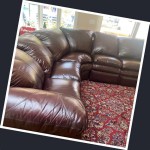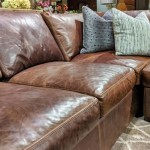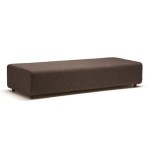How to Measure a Sofa Accurately
Accurate sofa measurements are crucial for various situations, from determining if a new sofa will fit through doorways and in its intended space to understanding its proportions for interior design planning. Improper measurements can lead to disappointment, logistical challenges, and potential return shipping costs. This article provides a comprehensive guide to measuring a sofa effectively, ensuring accurate dimensions for informed decision-making.
The process of measuring a sofa may seem straightforward, but careful attention to detail is essential. Inconsistencies in measuring techniques, failure to account for all dimensions, and neglecting to consider architectural features can all lead to inaccurate results. This guide outlines the necessary tools, step-by-step instructions, and considerations to achieve precision.
Gathering the Necessary Tools
Before commencing the measuring process, it is important to assemble the appropriate tools. These tools will ensure accuracy and efficiency throughout the process. The following items are recommended:
Measuring Tape: A flexible measuring tape, preferably at least 12 feet long, is a fundamental tool. Choose a tape measure with clear and easily readable markings in both inches and centimeters. The flexibility of the tape allows it to follow the contours of the sofa and measure around curves.
Level: A level is used to ensure that the measuring tape is held horizontally, especially when measuring height and depth. Maintaining a horizontal plane is crucial for obtaining accurate dimensions.
Straight Edge: A large straight edge, such as a yardstick or a long ruler, can be helpful for measuring straight lines across the sofa if the tape measure alone is insufficient. This is particularly useful for measuring the width of the sofa from arm to arm.
Paper and Pen: Accurate recording of measurements is essential. A notebook or piece of paper and a pen or pencil should be readily available to document each dimension as it is taken. Consider creating a simple sketch of the sofa to annotate the specific measurements.
Helper (Optional): While a sofa can be measured alone, having a second person assist can greatly improve accuracy, particularly for larger sofas. An assistant can hold the end of the measuring tape in place, ensuring that it remains taut and aligned correctly. They can also help to maneuver the sofa if necessary.
Step-by-Step Instructions for Measuring Key Dimensions
The accurate measurement of several key dimensions is crucial for assessing a sofa's compatibility with a space. These dimensions include width, depth, height, seat height, and arm height. Each dimension requires a specific approach to ensure accuracy.
Overall Width: The width of the sofa is measured from the outermost point of one arm to the outermost point of the opposite arm. Place the end of the measuring tape against the outside edge of one arm, ensuring it is perpendicular to the floor. Extend the tape across the sofa to the outside edge of the opposite arm. Record the measurement in inches (or centimeters, depending on preference). It is important to account for any curves or protruding elements of the arms when taking this measurement.
Overall Depth: The depth of the sofa is measured from the front edge of the sofa (including any cushions) to the back of the sofa frame. Place the end of the measuring tape against the front edge of the sofa, ensuring it is level and perpendicular to the floor. Extend the tape backward to the rearmost point of the sofa. Avoid compressing any cushions when taking this measurement, as this will result in an inaccurate depth reading. Record the measurement.
Overall Height: The height of the sofa is measured from the floor to the highest point of the sofa, typically the top of the back cushions. Place the end of the measuring tape on the floor, ensuring it is perpendicular to the floor. Extend the tape vertically upward to the highest point of the sofa. It is essential to ensure the measuring tape is perfectly vertical to obtain an accurate height measurement. Record the measurement.
Seat Height: The seat height is the distance from the floor to the top of the seat cushion. Place the end of the measuring tape on the floor, ensuring it is perpendicular. Extend the tape vertically to the top of the seat cushion. This measurement is important for determining the comfort and ergonomics of the sofa. Record the measurement.
Seat Depth: The seat depth is measured from the front edge of the seat cushion to the back of the seat cushion. Place the end of the measuring tape at the front edge of the seat cushion. Extend the tape backward to the back of the seat cushion, avoiding compression. This measurement is important for determining the amount of legroom available on the sofa. Record the measurement.
Arm Height: The arm height is the distance from the floor to the top of the armrest. Place the end of the measuring tape on the floor. Extend the tape vertically to the top of the armrest. This measurement can influence the comfort of the sofa when reading or relaxing. Record the measurement.
Accounting for Irregular Shapes and Architectural Constraints
Sofas often feature irregular shapes, curves, or protruding elements that can complicate the measuring process. Additionally, architectural constraints, such as doorways, hallways, and stairwells, must be considered to ensure the sofa can be moved into its intended space. Careful attention to these factors is critical to avoid logistical challenges.
Curved Sofas: When measuring a curved sofa, it is essential to take multiple measurements along the curve to accurately capture its dimensions. Measure the maximum width and depth, as well as the width and depth at several points along the curve. This information will provide a more complete understanding of the sofa's overall size and shape. A flexible measuring tape is particularly useful for measuring curved surfaces.
Sectional Sofas: Sectional sofas consist of multiple independent pieces that are joined together. Measure each section individually, following the same procedures as for a standard sofa. Record the dimensions of each section separately. It is also important to measure the overall dimensions of the sectional when all sections are assembled in different configurations. This will provide a comprehensive understanding of the sofa's footprint and allow for flexible arrangement options. Pay attention to the connection mechanisms between sections, as these may add additional width or depth.
Protruding Elements: Sofas may have protruding elements, such as decorative legs, rolled arms, or oversized cushions. These elements can add to the overall dimensions of the sofa and must be accurately measured. Pay particular attention to the outermost points of these elements when taking measurements.
Doorways and Hallways: Before purchasing a sofa, it is essential to measure all doorways, hallways, and stairwells through which the sofa will need to pass. Measure the width and height of doorways, as well as the width of hallways and stairwells. Also, consider any tight turns or obstacles that could impede the sofa's movement. Compare these measurements to the sofa's dimensions to ensure that it can be successfully delivered and installed. It may be necessary to remove doors or door frames to provide sufficient clearance.
Stairwells: Moving a sofa up or down a stairwell presents unique challenges. In addition to measuring the width of the stairwell, it is also important to measure the diagonal height of the stairs, as well as the height of the ceiling at each landing. These measurements will determine whether the sofa can be maneuvered around corners and through narrow spaces. Consider the weight of the sofa and whether professional movers will be required to handle the transport.
Elevators: If the sofa needs to be transported in an elevator, measure the elevator's width, depth, and height, as well as the width of the elevator door. Compare these measurements to the sofa's dimensions to ensure that it can fit inside the elevator. Consider the weight capacity of the elevator to ensure that it can safely handle the weight of the sofa.
Architectural Features: Note any architectural features that may affect the placement of the sofa, such as radiators, electrical outlets, baseboards, or windows. These features can limit the available space and may require adjustments to the sofa's placement. Measure the dimensions of these features and factor them into the overall spatial planning.
By carefully accounting for irregular shapes and architectural constraints, individuals can avoid potential logistical challenges and ensure that a newly purchased sofa fits seamlessly into its intended space.

Sofa Size Guide How To Measure For A Timeless Chesterfields

Tips And Guides How To Measure For A Sofa Sweetpea Willow S Blog

Measuring Upholstery 101 Part 2 Sofa

Sofa Dimensions 101 Measuring For Your Perfect

Sofa Size Calculator
Your Guide To Measuring For Sofa

Sofa Size Guide How To Measure For A Timeless Chesterfields Blog

How To Measure A Corner Sofa Abakus

Six Common Mistakes When A Sofa And Ways To Avoid Them

Sofa Dimensions For 2 3 4 5 6 Person Couches Diagrams Included Home Stratosphere








